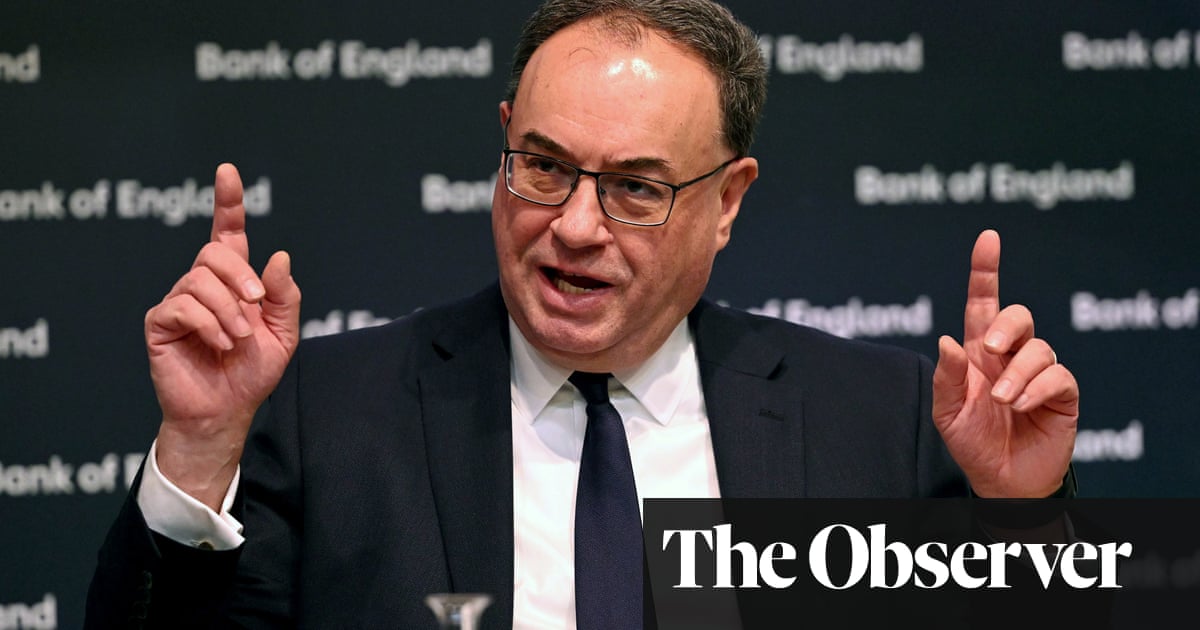
In 2006 the US central bank completed a series of interest rate rises that took its base rate from 1% to 5.25%. The plan was to cool a booming economy, but ended two years later with the great financial crash.
Earlier this month, the Federal Reserve was expected to push ahead with a 0.25 percentage point rise from its current range of 4.5% to 4.75%, this time to quell inflation generated by the Covid-19 pandemic and Ukraine war.
Last week that increase was thrown into doubt. And so was the Bank of England’s much-flagged interest rate rise, due on Thursday, that many in the City thought was a nailed-on certainty.
Analysts have changed their interest rate forecasts after the collapse of Silicon Valley Bank in the US, the sale of SVB’s London offshoot to HSBC for £1, and the rescue of Credit Suisse after being thrown a $54bn (£44bn) lifeline by the Swiss central bank.
Each bank has pursued its own risky strategy, allowing regulators to say their problems are one-offs. But the worry is that many more banks and financial firms have made similar bets and that their troubles have yet to surface. There could be hundreds of banks that depend on cheap financing where problems begin to emerge.
Paul Dales, chief economist at the consultancy Capital Economics, said concerns over the health of the global banking system had risen swiftly up the agenda in recent days and could force the nine members of the Bank of England’s monetary policy committee (MPC) to pull back.
“It is almost 50:50 between the MPC pausing or ending its series of interest rate hikes at the meeting on 23 March and raising rates by 25 basis points from 4% to 4.25%,” he said.
“A lot will depend on what happens in the global banking system between now and next Thursday. If the situation doesn’t deteriorate further, we think there will be a 0.25 percentage point hike.”
Martin Beck, chief economic adviser to the EY Item Club, said there was a strong case for easing back on interest rate rises before the bank rescues.
“Even in the absence of the well-publicised issues in the US banking sector, the case for the MPC to increase rates again in its March meeting had weakened,” he said.
“Unexpected falls in services inflation, moderating private sector pay growth, lower energy prices and reassuring survey evidence mean the risk that high inflation will prove persistent is diminishing,” he said, adding that “rates in the UK have risen far enough”.
Some MPC members are likely to focus on a renewed momentum in the economy that shows it is more robust than expected. Most forecasters have upgraded the UK’s economic progress, with the Treasury’s independent forecaster, the Office for Budget Responsibility, saying on Wednesday that a previously predicted recession would no longer happen this year.
One of the reasons given was Jeremy Hunt’s budget, which pumped a little bit more money into the economy than was expected, though most of the extra funds will be spent next year and the year after.
MPC members Swati Dhingra and Silvana Tenreyro have taken the opposite view, arguing in a series of speeches that 10 consecutive rate rises since December 2021 should be allowed to feed through into higher mortgage and business borrowing rates before more are considered.
In a recent speech, Dhingra said: “It risks unnecessarily denting output at a time when the economy is weak and deepening the pain for households when budgets are already squeezed through energy and housing costs.”
Dales said it was significant that the MPC had changed its language in February about the outlook for rates, giving support to those who believe they have peaked in the UK.
“After raising interest rates in early February, from 3.75% to 4%, the MPC altered its forward guidance from saying that further increases in bank rate may be required to [saying that] if there were to be more evidence of more persistent pressures, then further tightening in monetary policy would be required,” he said.
It is a way of saying that borrowing costs can stay where they are unless there is a good reason to push them higher. With the spectre of 2008 lurking, inaction could be a positive move.












